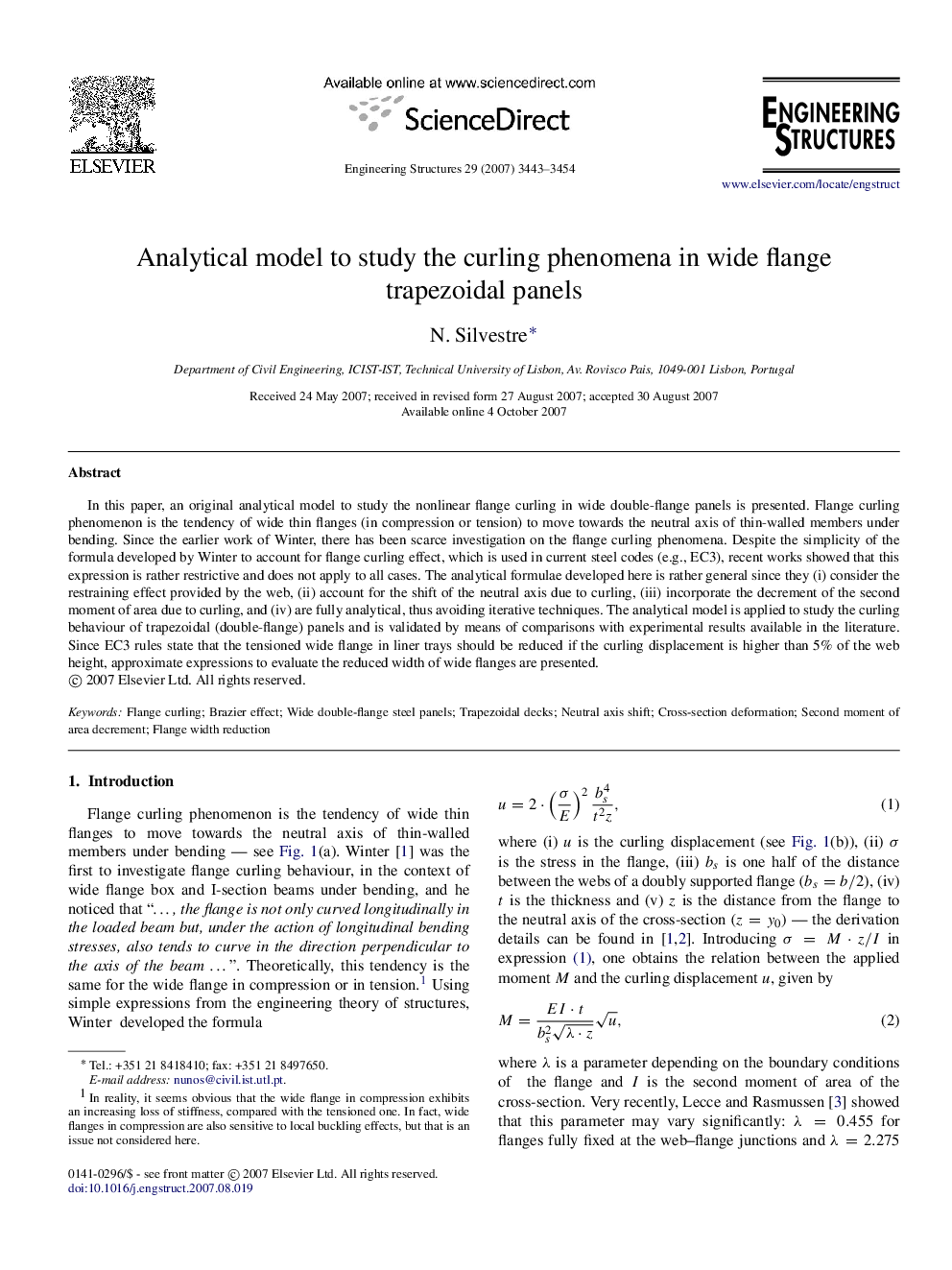| Article ID | Journal | Published Year | Pages | File Type |
|---|---|---|---|---|
| 268728 | Engineering Structures | 2007 | 12 Pages |
In this paper, an original analytical model to study the nonlinear flange curling in wide double-flange panels is presented. Flange curling phenomenon is the tendency of wide thin flanges (in compression or tension) to move towards the neutral axis of thin-walled members under bending. Since the earlier work of Winter, there has been scarce investigation on the flange curling phenomena. Despite the simplicity of the formula developed by Winter to account for flange curling effect, which is used in current steel codes (e.g., EC3), recent works showed that this expression is rather restrictive and does not apply to all cases. The analytical formulae developed here is rather general since they (i) consider the restraining effect provided by the web, (ii) account for the shift of the neutral axis due to curling, (iii) incorporate the decrement of the second moment of area due to curling, and (iv) are fully analytical, thus avoiding iterative techniques. The analytical model is applied to study the curling behaviour of trapezoidal (double-flange) panels and is validated by means of comparisons with experimental results available in the literature. Since EC3 rules state that the tensioned wide flange in liner trays should be reduced if the curling displacement is higher than 5% of the web height, approximate expressions to evaluate the reduced width of wide flanges are presented.
